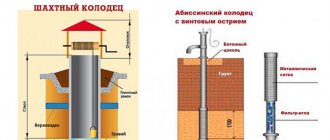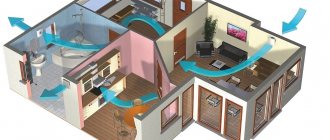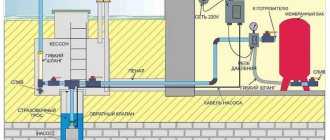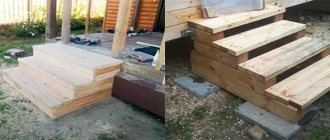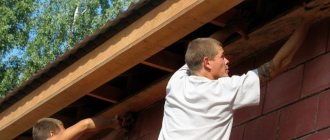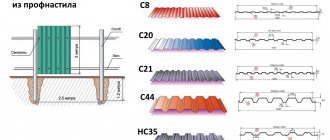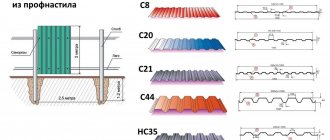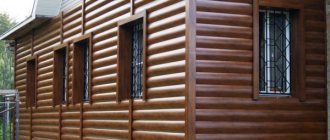Unlike the barbecue and grill fireplaces that have become traditional for a country house, a tandoor made with your own hands from brick allows you to additionally bake flat cakes, boil water or cook pilaf in a cauldron without additional equipment. It has the shape of a cylinder, ideally a barrel or large jug.
The main advantage is the high efficiency of fuel combustion, high-temperature processing of products and a long service life. However, the unusual placement of kebabs (vertically, not horizontally) did not allow this fireplace to gain a sufficient rating, like that of a barbecue grill and a barbecue grill.
Types of tandoors
Tandoors differ from a conventional oven in their special configuration, thanks to which you can forget about undercooked meat and vegetables. They also prepare aromatic oriental flatbreads - right on the walls. Externally, a classic tandoor resembles a clay jug in which firewood is placed, and then skewers are hung.
Uzbek tandoor
To create Uzbek tandoors, sand and camel hair were added to fireclay clay. A volumetric dome with a wall thickness of about 5 cm was sculpted from it, dried for 3 weeks and used as a top for the hearth. It is very difficult to make such a blank without experience, but now ready-made forms are even sold.
Photo: apriltime.ru
Armenian tandoor
The tandoor in Armenia is called “tonir” and it is also used to heat houses. Armenian tandoors were made from fireclay bricks, because local clay is not so pliable and durable. Essentially, it is a brick cylinder with clay joints and a plastered inner surface.
Photo: zen.yandex.ru
Earth tandoor
An earthen tandoor is made in a hole about 1-1.25 m deep with an air duct hole. The walls and bottom are lined with fireclay bricks and clay mortar. Or you can immerse a ready-made clay piece into the pit and compact it well. Such stoves retain heat best of all, but they cannot be dug in every soil.
Photo: sdelai-lestnicu.ru
Ground tandoor
As is obvious from the name, the ground tandoor is completely above the ground and is more reminiscent of a classic Russian oven. Firewood is placed in the roasting pan, and the draft is provided by a hole at the bottom. Fuel is loaded from above or from the side, and when it is completely burned out, you can lower the food.
Photo: icepohod.rf
Mobile tandoor
Compact portable tandoors are great for the garden and can be taken with you. They are made in the form of a barrel or jug from durable fireproof clay with a lid and handles. Larger models can be reinforced with steel strips.
Photo: nyctandyr.com
Wood-burning tandoor
This is a classic tandoor that uses firewood or coals. There is always a hole at the bottom for air flow and ash removal, so that the lid can be tightly closed during cooking. Only hardwood firewood is used due to the specific resins in the pine needles.
Photo: ventkam.ru
Gas tandoor
This is a modern variation of tandoors for professional kitchens and bakeries. There is also a clay pot inside, but the main body is made of steel. Gas is used instead of firewood, so using such a tandoor is no more difficult than using a home stove.
Photo: ru.m.wikipedia.org
Electric tandoor
Another modern variation, in which heating elements - tubular electric heaters - are placed on the bottom instead of fuel. They do not burn or smoke, so the device can be used even indoors. But keep in mind that the taste of cooked products will not be the same as when cooked over wood.
Photo: frutisad.ru
Furnace design and operating principle
The tandoor is a large clay vessel, narrowed at the top.
The unit has a hole where fuel and food for cooking are placed. To provide the necessary draft, a blower is made in the lower part of the tandoor, which is closed with a damper. To enhance the thermal insulation of the stove, it is lined with bricks on the outside. To maintain heat, salt, sand or clay are poured between the walls of the structure. When burned, the fuel heats the clay located between the side elements of the device to a temperature of 250-400 degrees. Such indicators are maintained inside the structure for up to 4 hours due to the good properties of the rock to retain heat.
Cooking occurs as follows. Mounted skewers or grates are installed inside the oven. Products such as meat, fish, and vegetables are placed on them.
And if you don’t know how to bake flatbreads in a tandoor, we will recommend one cooking method. After the clay walls heat up, it is necessary to wipe them from possible dust or combustion products. Then you need to sprinkle the side elements with water and attach the dough products to them. Baking occurs due to the heat accumulated in the walls. You can remove bread from the oven using a long-handled hook or a special ladle.
In this unique oven, food is cooked through the heat of the clay walls, which accumulates during the combustion of fuel. Thanks to this, food is cooked evenly on all sides and retains its juiciness. Cooking dishes on skewers does not require turning, since these elements are located vertically. The process of cooking food in a tandoor is much faster than in other traditional grills or barbecues.
Tandoor dimensions
To decide what size tandoor you need, consider how many foods you want to cook in it. For one or two simple mobile stoves are enough, but for company trips or family gatherings you need a larger option. Tandoors can be roughly divided into small ones up to 40 kg, medium ones up to 80 kg, large ones up to 100 kg and very large ones heavier than 100 kg.
Photo: cyprus-oven.ru
Specifics of using the fryer
This type of oven has Asian roots, so it allows you to cook, first of all, the delights of oriental cuisine. The dishes turn out juicy and acquire a special smoky aroma, this applies to both meat and flour products.
Adherents of a healthy lifestyle should definitely install a country Georgian tandoor - it allows you to cook food with a minimum oil content, you don’t have to put a lot of spices in your food, since the cooking technology helps preserve the food’s own moisture and gives a very bright taste to each ingredient.
If you equip a tandoor built above the ground with a special horizontal grate, the height of which is adjustable, the structure can be used as a traditional Russian oven, which significantly expands the range of dishes. It is also important that food is cooked faster in a fryer; for example, baking samsa with beef will take no more than half an hour.
DIY brick tandoor
Most often, modern tandoors are made from brick, because it has optimal fire resistance and thermal insulation properties. In addition to this, you will need cement, a sand-gravel mixture and a ready-made fire-resistant masonry mixture. And also mesh, asbestos fiber, paint, fittings and wire.
Foundation preparation
A brick tandoor is quite heavy, so a reliable foundation is required. On heavy soil, a simple columnar one is enough, but on light sandy soil you will need a monolithic concrete slab. The optimal size is about a meter per meter with a slab thickness of 10 cm, but first remove the soil layer 15 cm deep and make recesses in the corners for the verticals.
For reinforcement, use fiberglass reinforcement, and fill the bottom of the pit with sand. It is most convenient to make formwork from roofing boards and reinforcing mesh. For pouring, use a concrete mixture with the consistency of thick sour cream: sand with gravel in a ratio of 3:1 and cement grade 400 or higher.
Photo: drive2.ru
Photo: dizlandshafta.ru
Laying the base
Lay out the base of the tandoor from the same fireclay bricks from which you will make the walls. Keep in mind that regular red is not suitable for this purpose because it will not survive such temperatures. Fireclay has higher fire resistance and frost resistance, and is also denser and better able to withstand the pressure of the structure.
Before laying the brick base, the concrete foundation was covered with waterproofing roofing felt. For masonry, use a special oven mixture. To make the tandoor round, use a regular cutting wheel for cutting.
Photo: yaplakal.com
Tandoor body
The tandoor body is called the “rule” and according to the standard its height is equal to the width of the base. The diameter of the neck is one third of the diameter of the bottom substrate. For convenience, use a wooden pole and guides in increments of 25 cm.
Lay the bricks strictly vertically and do not skimp on the mortar for better adhesion. Each row must be tied together with wire according to the principle of rings on a barrel. Connect the inner edges as tightly as possible, and fill the distance between the outer edges with mortar.
Photo: fanerus.ru
Photo: mkdou19.ru
Photo: bani-nsk.ru
Tandoor coating
When the brickwork is dry, it needs to be plastered with a special oven mixture. Apply it in a layer of 1 cm and round the top edge so that it resembles a roller. While the plaster is drying, cover the structure with film to protect it from moisture and sun. After this, cover the tandoor with fireproof acrylic paint.
Photo: landscapedizajn.ru
What will you need?
To stock up on everything you need to build a tandoor, you will have to visit a hardware store.
Tools
The following tools will be used:
- Grinder with a diamond wheel designed for ceramics.
- Plaster rule and spatula.
- Paint brush.
- A vat for mixing concrete or an electric concrete mixer.
- Building level.
- Hacksaw saw.
- Hammer and nails or screwdriver and screws.
- Shovel.
- Boer.
- Pliers.
Materials
The names of the required materials and their approximate quantities are shown in the table. It should be taken into account that the actual consumption may differ both up and down.
Table. Material consumption for tandoor construction
| Material | Quantity |
| Fireproof (fireclay) brick. | 50 pcs. |
| Cement M-400. | 50 kg |
| Fireproof paint (acrylic or water-based). | 1 l |
| Steel, easily twisted wire with a diameter of 3 mm. | 15 m |
| Asbestos fiber. | 5 kg |
| Metal mesh with cell size 5 x 5 cm. | 2 linear meters with a width of 1 m |
| Sand-gravel mixture. | 150 kg |
| Fireproof mixture for masonry. | 15 kg |
| Fiberglass reinforcement with a diameter of 6 mm. | 15 m |
How to make a tandoor from a barrel
You can make a very simple tandoor with your own hands from a 200-liter metal barrel and brick. You'll also need sheet metal, stove grates, an old tire, and door hinges. And little things, like wire, fasteners and working tools.
For the foundation, dig the tire halfway into the ground and fill it with concrete. While it's drying, cut out a small rectangle in the barrel, make a frame out of sheet metal and screw it to it. When you fill the barrel with bricks, leave a path to this hole for blowing and cleaning.
Lay out the second layer of the bottom and place a metal grate instead of a brick above the hole. Fill the barrel up to the top with bricks and fill all the voids with mortar. Make a lid out of sheet metal, screw the door onto the frame, and place the barrel on the foundation.
Photo: drive2.ru
Photo: les-tish.ru
Photo: blog.sputniksadovoda.ru
Photo: drive2.ru
Site for the unit
If you are planning to build a tandoor stove at your summer cottage, then first of all you need to decide on the location of its installation.
Whatever the device, traditional Central Asian or modern portable, the best location is considered to be the eastern part of the summer cottage. Outbuildings, cottages, fruit trees and shrubs must be at least 10 m from the selected site. It is advisable that the area be extremely flat, since it requires the construction of a clay foundation for the stove.
If necessary, the foundation for the platform can be deepened into the ground.
For the safety of the structure and those around it, the tandoor is located away from gas pipes and electrical wiring. The area around the unit must be cleared of leaves and rags.
As a rule, a tandoor is installed outdoors, but it can also be placed under a roof or in a summer kitchen, providing the structure with a chimney.
DIY clay tandoor
Choose heat-resistant yellow or gray clay for kiln work with the expectation of the highest possible temperature. On a production scale, reinforcing components are added to the clay, strips are rolled out and a tandoor is sculpted from them. But this technique cannot be repeated with your own hands without experience and the necessary materials.
At home, cut thick cardboard into strips 30 cm wide and wrap around the diameter of the fireplace. Fill the container with sand inside and wrap the outside with special mortar tape. Then gradually add clay to even out the width and increase the height.
Photo: zen.yandex.ru
Photo: jamaster.ru
Photo: tan-door.net
Uzbek model: economical and practical construction
The version of the stove invented by the Uzbeks is suitable for particularly zealous owners. A single addition of fuel will allow the cooking process to take place within 3 hours. Creating a design takes time, but does not require significant expenses. Thanks to this technology, it will be possible to create a stationary or mobile tandoor.
The Uzbek stove model can vary significantly depending on the wealth of the owner and the region in which it is used. The main material for making the structure is clay. There are special fittings inside (inserts made of kaolin or refractory bricks).
A pitcher-shaped clay tandoor is the most economical choice. It allows you to be as careful as possible with fuel consumption.
To create the base, they use not only a special type of clay (“live”, with a high content of kaolin), but also animal wool (camel or sheep). Both materials are mixed, the resulting composition is aged for about a week. Time allows the solution to “mature”. At the same time, daily intervention in this process is inevitable: the composition needs to be “stirred”.
The finished material, aged for a week, is used to sculpt the base of the furnace. There are plenty of technologies for this. We will consider the most common and affordable way to make a tandoor oven yourself below.
DIY pit tandoor
To make a pit tandoor, dig a pit of the required size, adding 20-30 cm around the perimeter. Fill the bottom with a 15 cm thick layer of crushed stone and compact it well. Saturate it with hot mastic or lay heat-resistant waterproofing on top.
It is recommended to do the masonry around the perimeter in two layers, and lay thermal insulation material between them. Don't forget to move the chimney pipe to the side. You can coat the walls of the tandoor with special fireclay clay or leave them brick.
Photo: putivodi.ru
Photo: sdelai-lestnicu.ru
Photo: na-dache.pro
Subtleties of making a brick structure
Experts who know how to make a tandoor from brick recommend preparing the following materials in advance:
- fireclay clay;
- cement;
- steel grate;
- sand;
- fire brick;
- water;
- natural stone.
The amount of materials is determined based on the dimensions of the planned fryer. Work algorithm:
- Formation of the base. To build a brick tandoor, you must first dig a hole of the appropriate diameter, the height of which will coincide with the parameters of the future foundation. The optimal area would be a site with rocky or sandy soil, preferably away from walls and plantings; For pouring, a grate and high-quality concrete are used, which can withstand significant loads from the furnace. You can use a ready-made foundation mixture consisting of red clay, sand and plasticizers.
- Creation of masonry. The foundation will dry for 2 weeks, then you can begin to form the tandoor brickwork. The first step is to assemble the pattern without using mortar, and if the pattern matches, you can mix the cement mortar. The bricks are laid vertically, the level serves as a guide. At the very beginning, it is necessary to leave a blower - a gap through which air draft will flow.
- Applying a clay layer. When the masonry takes on a barrel-shaped or square shape, it is coated with a mixture of clay (fireclay) and water, and sometimes chopped sheep wool is added. Both internal and external surfaces are treated.
- Burning. A small amount of firewood is placed into the almost finished product and set on fire.
- Cladding with natural stone. This stage is necessary not only for decoration, but also to improve the operational properties of the brazier; if there is no stone, you need to make double brickwork (expanded clay is poured into the resulting gap).
- Creating the main cover and door for the blower.
How to cook in tandoor?
First, put coal in the tandoor and wait until it burns out completely. For the convenience of loading products, special skewers, hooks, grates and other useful accessories are sold. In a properly made tandoor, one load of fuel is enough for 5-6 hours of cooking.
Traditional oriental cakes are glued directly to the clay walls. To do this, you need to wash them well in advance from the old soot and wait until the new ash burns out completely. In order for the dough to stick to the surface better, it must first be well moistened with water.
Photo: doorsindom86.rf
Only natural fuel!
It’s not for nothing that a wood-fired tandoor is a classic design – only wood can create an optimal temperature regime, which will not only have a positive effect on the taste and texture of food, but will also protect the roasting pan from destruction. Charcoal will not work - with its burning intensity, eastern stoves burst (and cannot be repaired). Coal is also excluded, since the walls of the brazier absorb coke gases, and it can also no longer be used. Therefore, if you don’t want to bother with firewood, it’s easier to put up a grill, but the list of dishes will be limited.
Fire safety
They also criticized the short distance from the tandoor to the wall - 5 cm. Suddenly, the wall surface will smoke. However, the hostess assured that there was an industrial hood on the veranda (for barbecue), so there should be no problems. But when the second row of bricks was laid, it turned out that it would be better to make the gap larger - already at this stage the wind was sweeping leaves into the gap.
Lulka
“Tomorrow, if the weather and time permit, I will sculpt the 3rd row. With another pattern., And the leaves over there are already sweeping into the crack, here are those and why right next to each other... I feel like I’ll have to cover it with a square later... at least at the back wall...”
And the decision to install a tandoor on the veranda did not seem successful to everyone, although the ceiling height of Lulka is about 4 meters - everything should be fine.
Densider
“I don’t want to upset you too much, but when you light a tandoor, the flame rises up to a meter high. And this meter is not from the floor of the veranda, but from the top cut. If you heat it barely, so that the flame is not high, you won’t heat your tandoor with a half-brick wall. It won't even get rid of soot. So think about fire safety in advance.”
Other masonry options
To save consumables, some craftsmen use masonry - a vertical spoon. At the same time, the height of the stove also has 4 rows, but when building walls, the bricks are joined together not by a bed, but by a long side edge. But all technology remains unchanged. But it should be said that the strength of this design leaves much to be desired. Therefore, in this case, it is imperative to lay out the outer frame.
You can simplify the masonry process and make the stove in the shape of a strict cylinder. That is, do not make a neck at the end. At the same time, heat loss during cooking will increase, but not critically. And in this case, you can go two ways. Use a vertical poke in the masonry or place the brick horizontally.
Masonry from halves Source ad-cd.net
Why do you need a mop stick?
The work was nearing completion, it was time to correct the flaws of the previous row of bricks and think through the top hole.
Lulka
“I decided to make some kind of pattern so that the top hole would not suddenly be shifted somewhere to the side. I bought a sheet of EPPS, 2 cm thick. It could have been thicker, but I thought that it would be more difficult for me to cut it and tug it in and out. I cut out a circle of dia. 54.5 cm, so that it would go into confusion, and a “sail” was made from 3 parts. The mast is a mop stick. Please don’t make fun of me or laugh loudly, I did it as best I could, using the blonde’s improvised means... Chinese chopsticks also came into play.
Ultimately, the sail underwent some changes, which were sculpted after fitting. And after all, I seemed to have calculated everything, measured it out, but still had to trim and glue it, fortunately the material is suitable for transformation, I can’t imagine how much fuss I would have had with plywood!”
The bricks were signed again, the seams and the help of the basin were outlined. All this was necessary - after all, the FORUMHOUSE user was working with brick for the first time and did not want to redo it at all.
The row was placed on the solution, the hose was carefully pulled out. The third row (half a brick) was also laid, but the work did not pass the level test.
Therefore, Lulka dismantled the third circle and folded it again - the cauldron fit perfectly. It remains to wait 14 days for the first heating.
Historical reference
A tandoor is an Asian oven-broiler that has a cone shape and is intended for cooking.
A tandoor is a jug-shaped or spherical roasting pan. Distributed among the peoples of Asia. The specific shape and material ensures the highest heat capacity of the furnace. The tandoor allows you to get by with a minimum amount of fuel, which is important for areas where there has never been an abundance of wood.
This type of brazier has been known for more than 5 thousand years. It is believed that it first appeared in Mesopotamia and then spread throughout the eastern region. It was heated with brushwood, firewood, and dung. For a long time, only stationary models were built, but as blacksmithing developed, portable ones began to appear.
The tandoor is for cooking, not heating. In East Asia, baked goods come in the form of flatbreads, so baking trays or racks are not needed. Pieces of dough are molded onto rounded walls, where they are quickly heated and baked.
When the husband is tired of construction
FORUMHOUSE user Lulka opened a new topic on the forum and honestly said that when she started talking about the tandoor, her husband did not express enthusiasm, and made it clear that he was resting after the worries associated with building a house.
Lulka
“He began to fidget restlessly on the sofa, making it clear that I was again trying to invade his zen, which he stubbornly refused to leave after our construction project. In response I heard something vaguely cartoonish: “Sho? Again?" and “I understand everything, there is no money!” That’s why I’m doing this business all at once.”
The forum member had no experience as a builder at all (except that as a child she watched her father build a dacha) - nor did she have any experience as a stove-maker. She immediately admitted this and asked not to sharply criticize her work (it hurts not to throw slippers). To begin with, Lulka actively searched for information on the Internet. Especially on our forum, where there are many people who have built a tandoor on their own site and are ready to share tips to help beginners “pump up” in this matter.
As a result, it was decided to install a tandoor on the veranda in order to use the stove in any weather and not have to worry about the canopy.
Operating rules
Do not use flammable liquids to ignite the tandoor.
Safety precautions are very simple:
- Children and pets are not allowed on the site during cooking;
- You cannot place a portable tandoor next to wooden objects;
- during cooking, you cannot touch the walls of the brick model - they are hot;
- You can only remove finished products using canvas gloves and special hooks;
- When igniting, do not bend low.
It is strictly forbidden to use flammable liquids such as alcohol, gasoline, kerosene for ignition.
Creating a "rule"
Traditionally, the width of the base of the roasting pan being made should be the same size as the height. The neck is one third smaller in relation to the base.
Based on this, a “rule” of the following dimensions is assembled:
- Pole height - 100 cm;
- base length - 0.3 m;
- second level - 0.25 m;
- the distance between the guides is 0.25 m.
You can take a piece of plywood as a template for building a vertical wall. In particular, you can use a wooden slats from a regular bed.
